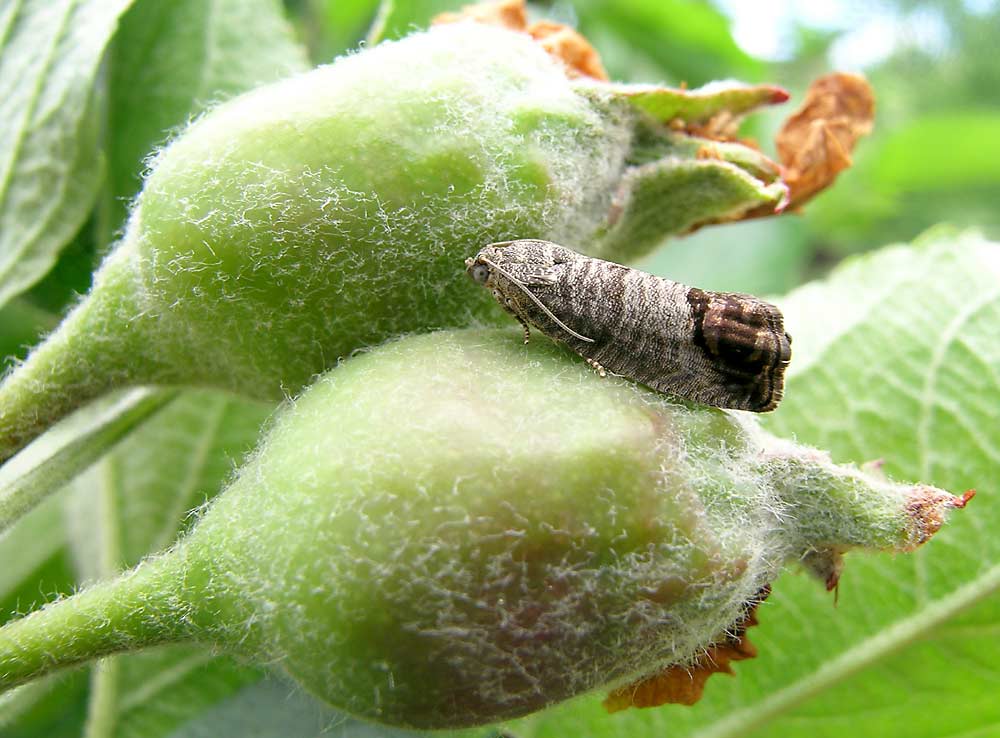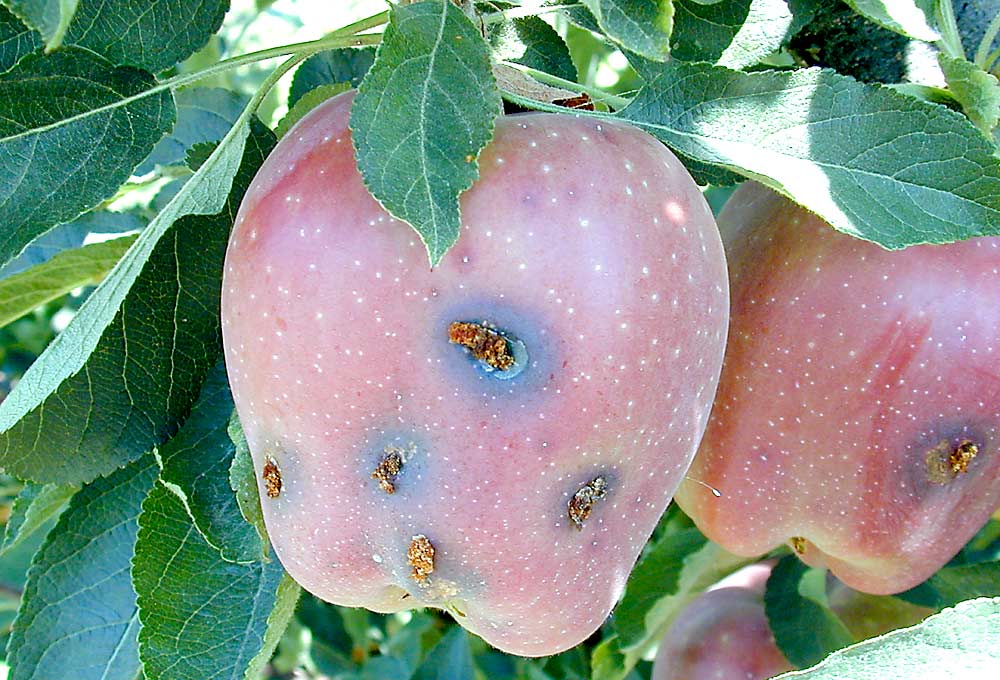
To address the growing concern over codling moth management, the Washington Tree Fruit Research Commission assembled a new industry task force last fall. Today, the task force consists of 29 members, including growers, researchers, extension specialists, crop consultants and other industry representatives. It is led by Christopher Adams, assistant professor of entomology at Oregon State University, along with an executive committee that includes Elizabeth Beers, Washington State University; Michael Doerr, Wilbur-Ellis Co.; David Epstein, Northwest Horticultural Council; and Louis Nottingham, Washington State University.
Problem statement
Codling moth has been the key pest of pome fruits across the growing regions of Washington and Oregon for over 100 years. During that time, pest management programs regularly evolved as key pesticides were phased out and new technology was incorporated. As we continue to adapt new tools and tactics, there is a need to synthesize and evaluate past and current codling moth research and management recommendations, and to communicate that information to stakeholders. The Codling Moth Task Force was created to take the lead in this issue.
History of codling moth management
Integrated Pest Management (IPM) in the pome fruit industry underwent a dramatic change in production practices beginning with the registration of codling moth mating disruption in 1990. Two multistate, multi-institution USDA areawide projects encouraged widespread adoption of mating disruption, resulting in a reduced reliance on organophosphate insecticides for codling moth management. Subsequent adoption of mating disruption by the tree fruit industry has provided stable codling moth control for nearly 30 years.
Other strategies have aided in the successful modernization of codling moth management. The development and refinement of the degree-day model that predicts codling moth development has greatly improved decision making. This model, along with recommended spray timings for ovicides and larvicides, are now gathered in a single resource: the WSU Decision Aid System, or DAS (https://decisionaid.systems).

The use of pheromone-baited traps for monitoring adult moth activity became a standard practice, with new high-load lures for use in mating disruption orchards. Because of the planned phaseout of azinphos-methyl (Guthion) in 2012, the Pest Management Transition Project was initiated to help growers learn to use newer organophosphate-alternative products. For the first time, growers had a selection of active ingredients (diamides, spinosyns, neonicotinyls, granuloviruses and insect growth regulators) to target multiple codling moth life stages and to practice insecticide rotation for resistance management, while still using mating disruption as the foundation of the IPM program.
However, after years of successful control, reports of increased codling moth pressure are becoming more frequent, so it is time to renew our focus on codling moth management. The Codling Moth Task Force aims to promote education on basic biology, monitoring and management; identify challenges to control; keep the industry up to date on new research findings, both local and worldwide; and, finally, encourage novel research and extension initiatives that will provide new tactics and approaches in the future.
First step: Industry survey
A first and critical step in this process is to characterize industry practices for codling moth control, with the aim of better understanding why problems are occurring. An industrywide survey has been developed by the task force and will be circulated to identify the primary challenges experienced by growers and the variables associated with poor codling moth control. A link to the online survey is available on the WSU Tree Fruit website (treefruit.wsu.edu/article/2021-codling-moth-survey) and will also be posted on the Washington Tree Fruit Research Commission website (treefruitresearch.org). We strongly encourage growers and other stakeholders to participate in this survey to help identify the most important issues and establish research and education priorities. •
—by Louis Nottingham, Christopher Adams, Elizabeth Beers, Michael Doerr and David Epstein






Leave A Comment